39 in semantic segmentation pixel labels
Semantic Segmentation Using Pixel-Wise Adaptive Label Smoothing via ... To achieve high performance, most deep convolutional neural networks (DCNNs) require a significant amount of training data with ground truth labels. However, creating ground-truth labels for semantic segmentation requires more time, human effort, and cost compared with other tasks such as classification and object detection, because the ground-truth label of every pixel in an image is required ... What Is Instance Segmentation? [2022 Guide & Tutorial] 20.07.2022 · Whereas an object detection system coarsely localizes multiple objects with bounding boxes and a semantic segmentation framework produces pixel-level category labels for each category class, Instance Segmentation produces a segment map of each category as well as each instance of a particular class—therefore, providing a more meaningful inference …
github.com › lhoyer › DAFormerGitHub - lhoyer/DAFormer: [CVPR22] Official Implementation of ... As acquiring pixel-wise annotations of real-world images for semantic segmentation is a costly process, a model can instead be trained with more accessible synthetic data and adapted to real images without requiring their annotations.
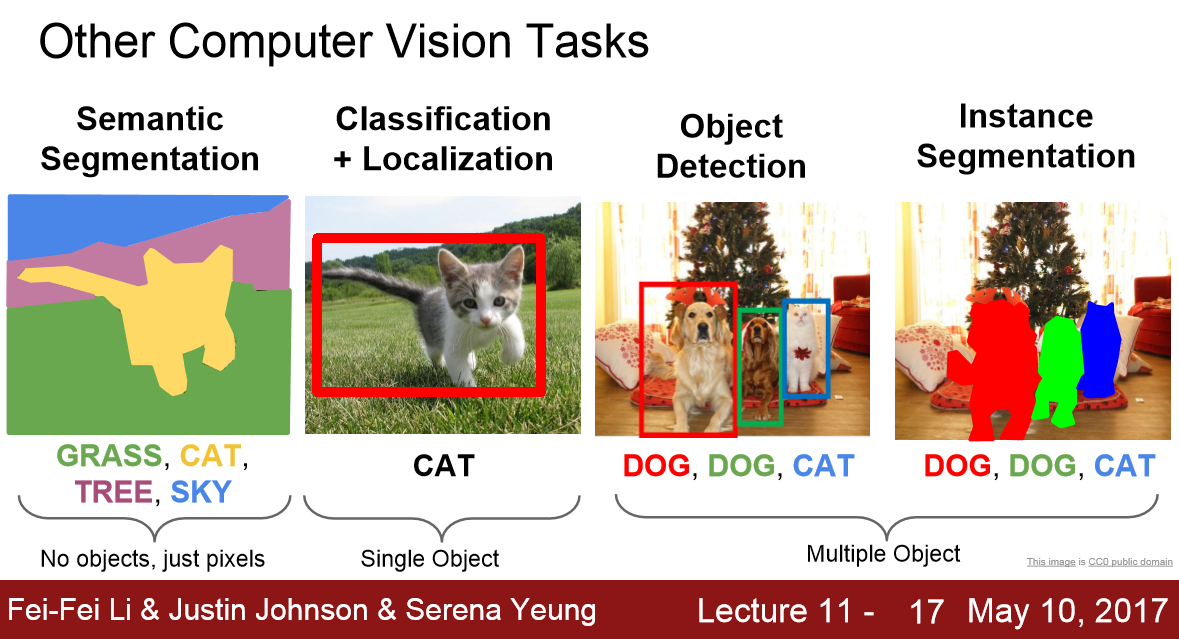
In semantic segmentation pixel labels
Cityscapes Dataset | Papers With Code Cityscapes is a large-scale database which focuses on semantic understanding of urban street scenes. It provides semantic, instance-wise, and dense pixel annotations for 30 classes grouped into 8 categories (flat surfaces, humans, vehicles, constructions, objects, nature, sky, and void). The dataset consists of around 5000 fine annotated images and 20000 coarse annotated ones. Semantic segmentation of an image with multiple labels per pixel The training set has pixels of colors r0, r1, r2, r3, g0, g1, g2, g3, b0, b1, b2, b3, but it has no pixels of color r0g1b2 or of color r2g3b0. Three separate models (one per channel) will easily learn to predict the channel category, but it will never output r0g1b2 and r2g3b0 classes in 64 class model because it have never seen those classes. U-Net: Convolutional Networks for Biomedical Image Segmentation 18.05.2015 · It is shown that such a network can be trained end-to-end from very few images and outperforms the prior best method (a sliding-window convolutional network) on the ISBI challenge for segmentation of neuronal structures in electron microscopic stacks. There is large consent that successful training of deep networks requires many thousand annotated training samples. …
In semantic segmentation pixel labels. How To Label Data For Semantic Segmentation Deep Learning Models ... In semantic segmentation annotated images, each pixel in image belongs to a single class, as opposed to object detection where the bounding boxes of objects can overlap over each other. The main... PDF Semi-Supervised Semantic Segmentation Using Unreliable Pseudo-Labels The crux of semi-supervised semantic segmentation is to assign adequate pseudo-labels to the pixels of unlabeled images. A common practice is to select the highly confident predictions as the pseudo ground-truth, but it leads to a problem that most pixels may be left unused due to their unreliability. Understanding Semantic Image Segmentation and Its Use Cases Semantic segmentation splits an image into segments (classes), not leaving a single pixel unattributed. In our example from the Maldives above, there are three segments: the sun, the ocean, and the sky. Labelers use different colors to match each, especially minding the borders. This way, every single pixel belongs to a class and has its color. Image Classification using Machine Learning and Deep Learning COCO Sponsored by Microsoft is a large-scale object detection, segmentation, and captioning dataset. It contains images, bounding boxes and labels. There are two versions 2014 and 2017 that use ...
Pytorch semantic segmentation github - vzkv.polskie-karmy.pl Segmentation Models Pytorch Github.I have 224x224x3 images and 224x224 binary segmentation masks.Semantic Segmentation is an image analysis task in which we classify each pixel in the image into a class. BCELoss requires a single scalar value as the target, while CrossEntropyLoss allows only one class for each pixel. [Preview] README.md -. GitHub - neheller/kits19: The official repository of the 2019 Kidney ... 23.10.2021 · Will give you two Nifty1Images.Their shapes will be (num_slices, height, width), and their pixel datatypes will be np.float32 and np.uint8 respectively. In the segmentation, a value of 0 represents background, 1 represents kidney, and 2 represents tumor. For information about using a Nifty1Image, see the Nibabel Documentation (Getting Started) Federated learning-based semantic segmentation for pixel-wise defect ... The complete dataset is highly imbalanced, with ~ 80 % pixels being powder (label 0), ~ 14 % being part (label 1), and ~ 6 % being defects (labels 2-8). 2.2. Semantic segmentation task and metric. Semantic segmentation aims to label each pixel in an image into one or more human-interpretable classes. Semantic Segmentation using Deep Lab V3 - Deep Learning Analytics Semantic Segmentation at 30 FPS using DeepLab v3. Semantic segmentation is the process of associating each pixel of an image with a class label, (such as flower, person, road, sky, ocean, or car). This detailed pixel level understanding is critical for many AI based systems to allow them overall understanding of the scene.
Multi-layer pseudo-supervision for histopathology tissue semantic ... Since the information gap between patch-level classification labels and pixel-level segmentation labels is huge. The pseudo masks generated from patch-level annotations are no doubt incomplete and imperfect. It is the reason why we proposed MLPS to provide as much information as possible from different layers of the classification model. Understanding Images from Pixel Level with Semantic Segmentation - DeepLobe In semantic segmentation, every pixel of an image is associated with a class label as it treats multiple objects of the same class as a single entity. For example, in the above image, there are classes labeled as "camel", "man", "water", "sand", "sky" and any pixel belonging to any camel is assigned to the same "camel" class. Image segmentation | TensorFlow Core 16.06.2022 · Semantic segmentation datasets can be highly imbalanced meaning that particular class pixels can be present more inside images than that of other classes. Since segmentation problems can be treated as per-pixel classification problems, you can deal with the imbalance problem by weighing the loss function to account for this. It's a simple and elegant way to deal … Introduction to Semantic Image Segmentation - Medium More precisely, semantic image segmentation is the task of labelling each pixel of the image into a predefined set of classes. Segmentation of images ( Source) For example, in the above image...
Augment Pixel Labels for Semantic Segmentation Semantic segmentation training data consists of images represented by numeric matrices and pixel label images represented by categorical matrices. When you augment training data, you must apply identical transformations to the image and associated pixel labels. This example demonstrates three common types of transformations:
Label Pixels for Semantic Segmentation - MathWorks Label Pixels for Semantic Segmentation The Image Labeler , Video Labeler, and Ground Truth Labeler (Automated Driving Toolbox) apps enable you to assign pixel labels manually. Each pixel can have at most one pixel label. The labels are used to create ground truth data for training semantic segmentation algorithms. Start Pixel Labeling
Learning indoor point cloud semantic segmentation from image-level labels Weakly Supervised Semantic Segmentation for Images: Various types of weak labels such as bounding boxes [], scribbles [], and points [] have been utilized as weak supervision.In particular, image-level class labels have been widely used since they require minimal effort for annotation [2, 10, 16].Most approaches using the image-level supervision are based on CAMs [23, 28, 38, 44] that roughly ...
arxiv.org › abs › 2201[2201.03546] Language-driven Semantic Segmentation - arXiv.org Jan 10, 2022 · We present LSeg, a novel model for language-driven semantic image segmentation. LSeg uses a text encoder to compute embeddings of descriptive input labels (e.g., "grass" or "building") together with a transformer-based image encoder that computes dense per-pixel embeddings of the input image. The image encoder is trained with a contrastive objective to align pixel embeddings to the text ...
Coarse-to-fine Semantic Segmentation from Image-level Labels Semantic segmentation, the task of assigning semantic labels to each pixel in images, is of great importance in many computer vision applications such as autonomous driving, human-machine interaction, and image search engines.
An overview of semantic image segmentation. - Jeremy Jordan Common datasets and segmentation competitions Further reading More specifically, the goal of semantic image segmentation is to label each pixel of an image with a corresponding class of what is being represented. Because we're predicting for every pixel in the image, this task is commonly referred to as dense prediction.
en.wikipedia.org › wiki › Image_segmentationImage segmentation - Wikipedia Instance segmentation is an approach that identifies, for every pixel, a belonging instance of the object. It detects each distinct object of interest in the image. For example, when each person in a figure is segmented as an individual object. Panoptic segmentation combines semantic and instance segmentation. Like semantic segmentation ...
› paper › U-NetU-Net: Convolutional Networks for Biomedical Image Segmentation May 18, 2015 · It is shown that such a network can be trained end-to-end from very few images and outperforms the prior best method (a sliding-window convolutional network) on the ISBI challenge for segmentation of neuronal structures in electron microscopic stacks. There is large consent that successful training of deep networks requires many thousand annotated training samples. In this paper, we present a ...
What exactly is the label data set for semantic segmentation using FCN? In semantic segmentation, the label set semantically. Which mean every pixels have its own label. For example, we have 30x30x3 image dimensions, so we will have 30x30 of label data. Every pixels in...
Semantic vs. Instance vs. Panoptic Segmentation - PyImageSearch The difference between semantic vs. instance vs. panoptic segmentation lies in how they process the things and stuff in the image. Semantic segmentation studies the uncountable stuff in an image. It analyzes each image pixel and assigns a unique class label based on the texture it represents. For example, in Figure 1, an image contains two cars ...
[2201.03546] Language-driven Semantic Segmentation - arXiv.org 10.01.2022 · We present LSeg, a novel model for language-driven semantic image segmentation. LSeg uses a text encoder to compute embeddings of descriptive input labels (e.g., "grass" or "building") together with a transformer-based image encoder that computes dense per-pixel embeddings of the input image. The image encoder is trained with a contrastive …
GitHub - venkanna37/Label-Pixels: Label-Pixels is a tool for semantic ... Label-Pixels is the tool for semantic segmentation of remote sensing imagery using Fully Convolutional Networks (FCNs). Initially, this tool developed for extracting the road network from high-resolution remote sensing imagery. And now, this tool can be used to extract various features (Semantic segmentation of remote sensing imagery).
› tutorials › imagesImage segmentation | TensorFlow Core Jun 16, 2022 · The dataset consists of images of 37 pet breeds, with 200 images per breed (~100 each in the training and test splits). Each image includes the corresponding labels, and pixel-wise masks. The masks are class-labels for each pixel. Each pixel is given one of three categories: Class 1: Pixel belonging to the pet. Class 2: Pixel bordering the pet.
Semantic Segmentation: Definition, Methods, and Key Applications Semantic segmentation is the process of assigning a class label to each pixel in an image (aka semantic classes). The labels may say things like "dog," "vehicle," "sky," etc. The same-class pixels are then grouped together by the ML model. Semantic segmentation can be, thus, compared to pixel-level image categorization.
paperswithcode.com › dataset › cityscapesCityscapes Dataset | Papers With Code Cityscapes is a large-scale database which focuses on semantic understanding of urban street scenes. It provides semantic, instance-wise, and dense pixel annotations for 30 classes grouped into 8 categories (flat surfaces, humans, vehicles, constructions, objects, nature, sky, and void). The dataset consists of around 5000 fine annotated images and 20000 coarse annotated ones. Data was ...
keylabs.ai › image-annotation-toolImage Annotation Tool - Image Annotation Online | Keylabs This is the most commonly used form of image segmentation. It involves separating each pixel in an image into classes and then labeling them. Annotators use a polygon annotation tool to outline objects so that they can accurately capture their shape. Any background features, like sky or trees, are also assigned labels and highlighted.
Label Pixels for Semantic Segmentation - MATLAB & Simulink - MathWorks Label Pixels for Semantic Segmentation The Image Labeler , Video Labeler, and Ground Truth Labeler (Automated Driving Toolbox) apps enable you to assign pixel labels manually. Each pixel can have at most one pixel label. The labels are used to create ground truth data for training semantic segmentation algorithms. Start Pixel Labeling
Semi-Supervised Semantic Segmentation Using Unreliable Pseudo-Labels ... The crux of semi-supervised semantic segmentation is to assign adequate pseudo-labels to the pixels of unlabeled images. A common practice is to select the highly confident predictions as the pseudo ground-truth, but it leads to a problem that most pixels may be left unused due to their unreliability. We
Semantic Segmentation - The Definitive Guide for 2021 - cnvrg The process of linking each pixel in an image to a class label is referred to as semantic segmentation. The label could be, for example, cat, flower, lion etc. Semantic segmentation can be thought of as image classification at pixel level. Therefore, in semantic segmentation, every pixel of the image has to be associated with a certain class label.
Semantic Segmentation Using Pixel-Wise Adaptive Label Smoothing via ... To achieve high performance, most deep convolutional neural networks (DCNNs) require a significant amount of training data with ground truth labels. However, creating ground-truth labels for semantic segmentation requires more time, human effort, and cost compared with other tasks such as classification and object detection, because the ground-truth label of every pixel in an image is required.
Semantic Segmentation; A brief overview - KlearStack AI Semantic segmentation is the process where we classify each pixel of an image that belongs to a particular label/ class. There is no difference between separate instances of the same object. For example, if the image contains two apples, semantic segmentation will give all pixels of both apples the same name. Instance Segmentation
GitHub - lhoyer/DAFormer: [CVPR22] Official Implementation of … DAFormer: Improving Network Architectures and Training Strategies for Domain-Adaptive Semantic Segmentation. by Lukas Hoyer, Dengxin Dai, and Luc Van Gool. 🔔 We are happy to announce that DAFormer was accepted at CVPR22. 🔔. 🔔 We are happy to announce that our follow-up work HRDA on high-resolution UDA was accepted at ECCV22. 🔔. Overview. As acquiring …
Semi-Supervised Semantic Segmentation Using Unreliable Pseudo-Labels The SLRNet can provide a unified single-stage framework for various label-efficient semantic segmentation settings: (1) WSSS with image-level labeled data, (2) SSSS with a few pixel-level labeled ...
Image segmentation - Wikipedia Semantic segmentation is an approach detecting, for every pixel ... The common trait of cost functions is to penalize change in pixel value as well as difference in pixel label when compared to labels of neighboring pixels. Iterated conditional modes/gradient descent. The iterated conditional modes (ICM) algorithm tries to reconstruct the ideal labeling scheme by changing …
How to to drop a specific labeled pixels in semantic segmentation For semantic segmentation you have 2 "special" labels: the one is "background" (usually 0), and the other one is "ignore" (usually 255 or -1). "Background" is like all other semantic labels meaning "I know this pixel does not belong to any of the semantic categories I am working with".
Multi-Label Image Classification – Prediction of image labels 26.10.2021 · Image segmentation; Image translation; Object tracking (in real-time), and a whole lot more. What is Multi-Label Image Classification? Let’s understand the concept of multi-label image classification with an intuitive example. If I show you an image of a ball, you’ll easily classify it as a ball in your mind. The next image I show you are ...
Beginner's Guide to Semantic Segmentation [2022] Semantic Segmentation in V7 The goal is simply to take an image and generate an output such that it contains a segmentation map where the pixel value (from 0 to 255) of the iput image is transformed into a class label value (0, 1, 2, … n). An overview of the Semantic Image Segmentation process
Augment Pixel Labels for Semantic Segmentation - MathWorks Semantic segmentation training data consists of images represented by numeric matrices and pixel label images represented by categorical matrices. When you augment training data, you must apply identical transformations to the image and associated pixel labels. This example demonstrates three common types of transformations:
U-Net: Convolutional Networks for Biomedical Image Segmentation 18.05.2015 · It is shown that such a network can be trained end-to-end from very few images and outperforms the prior best method (a sliding-window convolutional network) on the ISBI challenge for segmentation of neuronal structures in electron microscopic stacks. There is large consent that successful training of deep networks requires many thousand annotated training samples. …
Semantic segmentation of an image with multiple labels per pixel The training set has pixels of colors r0, r1, r2, r3, g0, g1, g2, g3, b0, b1, b2, b3, but it has no pixels of color r0g1b2 or of color r2g3b0. Three separate models (one per channel) will easily learn to predict the channel category, but it will never output r0g1b2 and r2g3b0 classes in 64 class model because it have never seen those classes.
Cityscapes Dataset | Papers With Code Cityscapes is a large-scale database which focuses on semantic understanding of urban street scenes. It provides semantic, instance-wise, and dense pixel annotations for 30 classes grouped into 8 categories (flat surfaces, humans, vehicles, constructions, objects, nature, sky, and void). The dataset consists of around 5000 fine annotated images and 20000 coarse annotated ones.


![Beginner's Guide to Semantic Segmentation [2022]](https://assets-global.website-files.com/5d7b77b063a9066d83e1209c/614ca8d2d8b99f6c486dbdd7_V7%20dashboard.PNG)


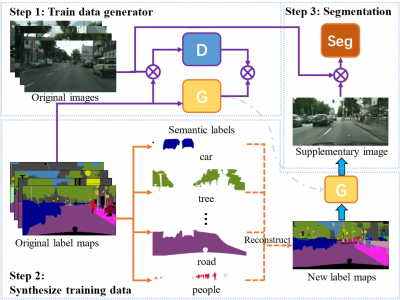



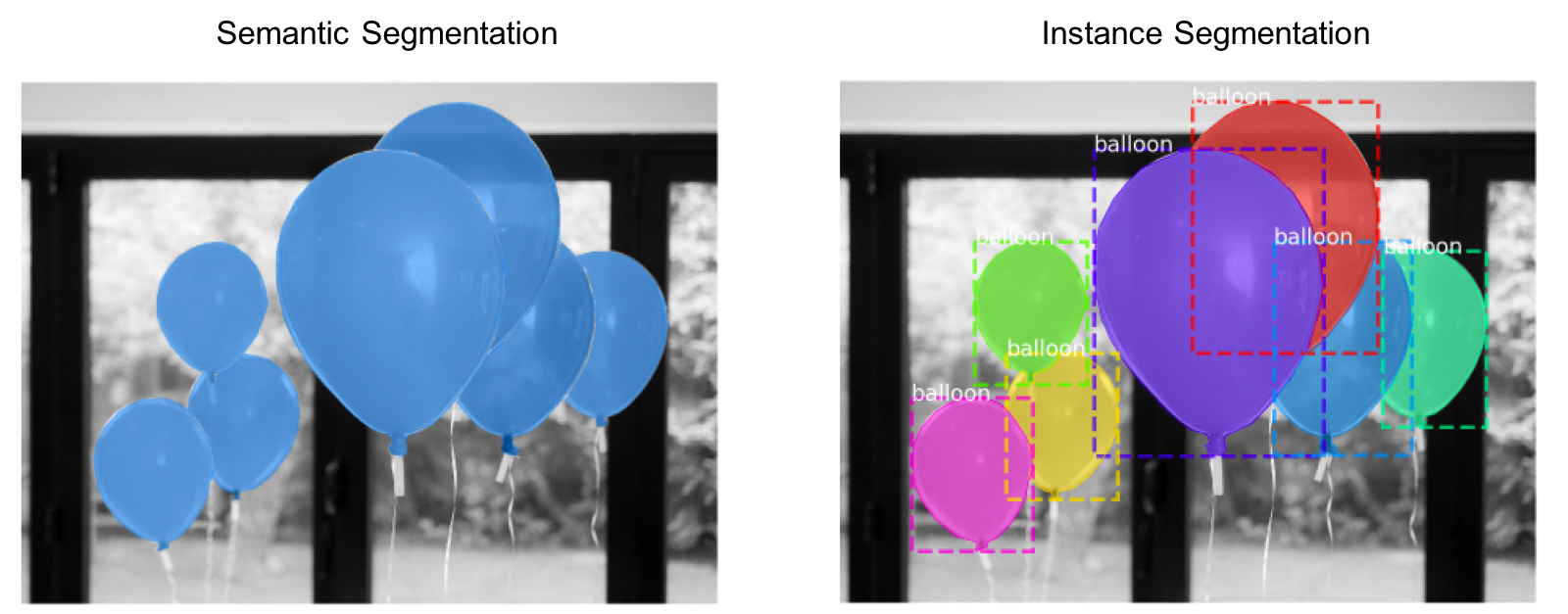
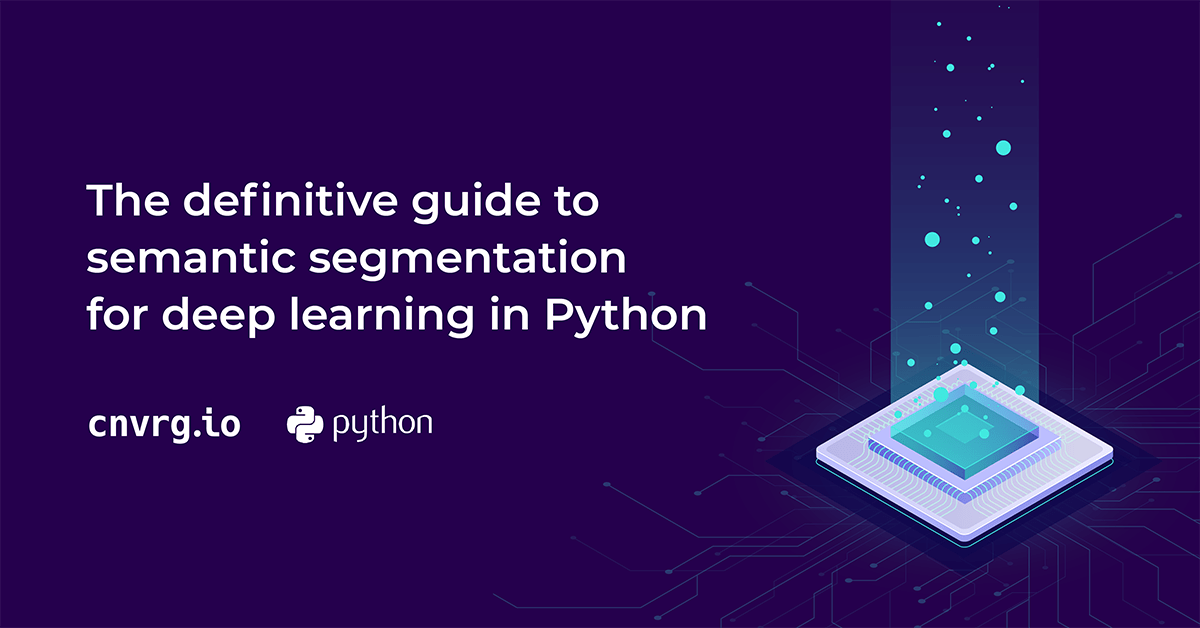

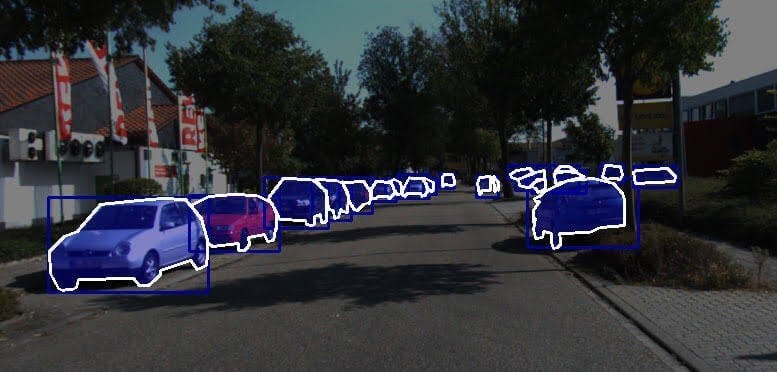
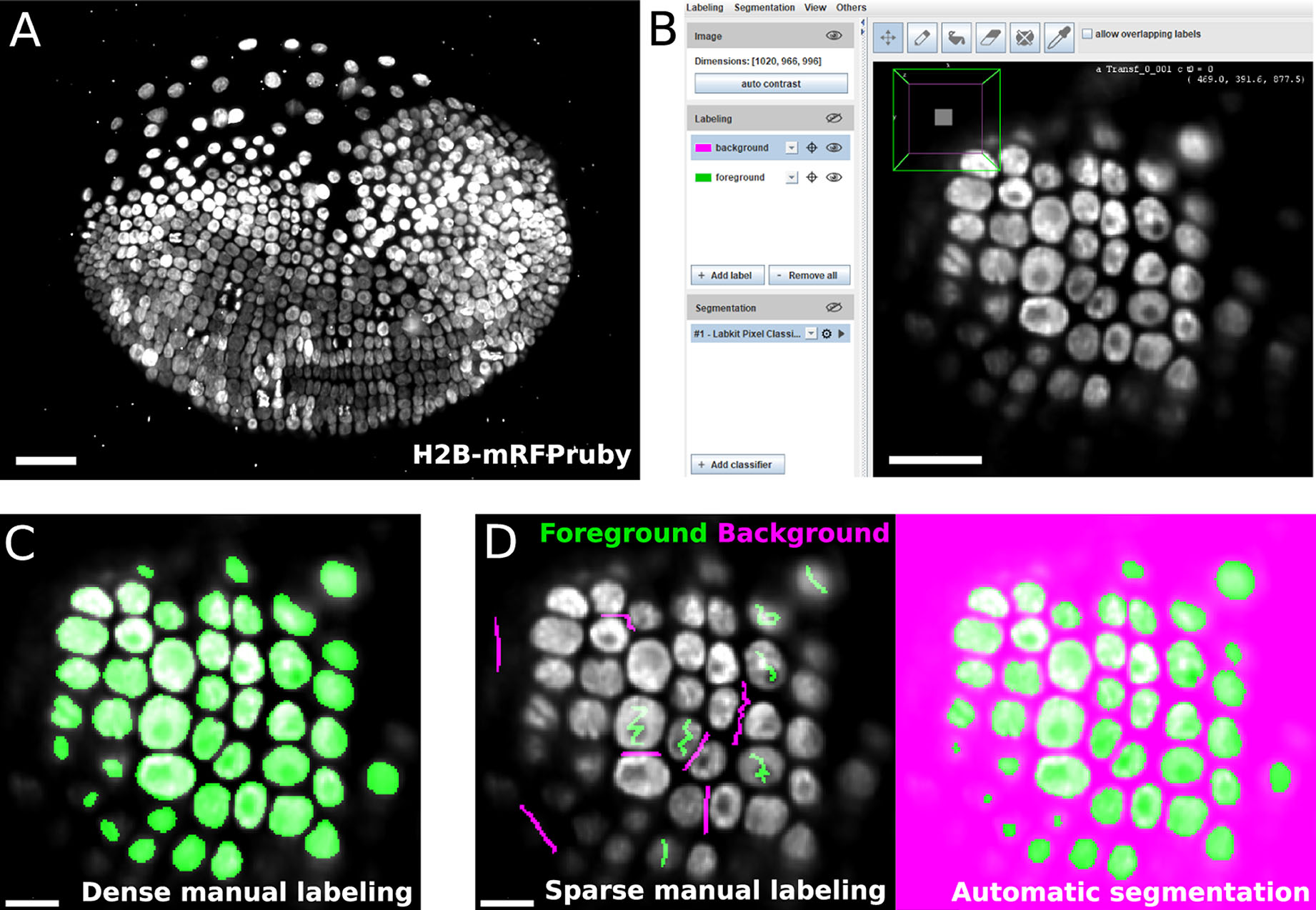

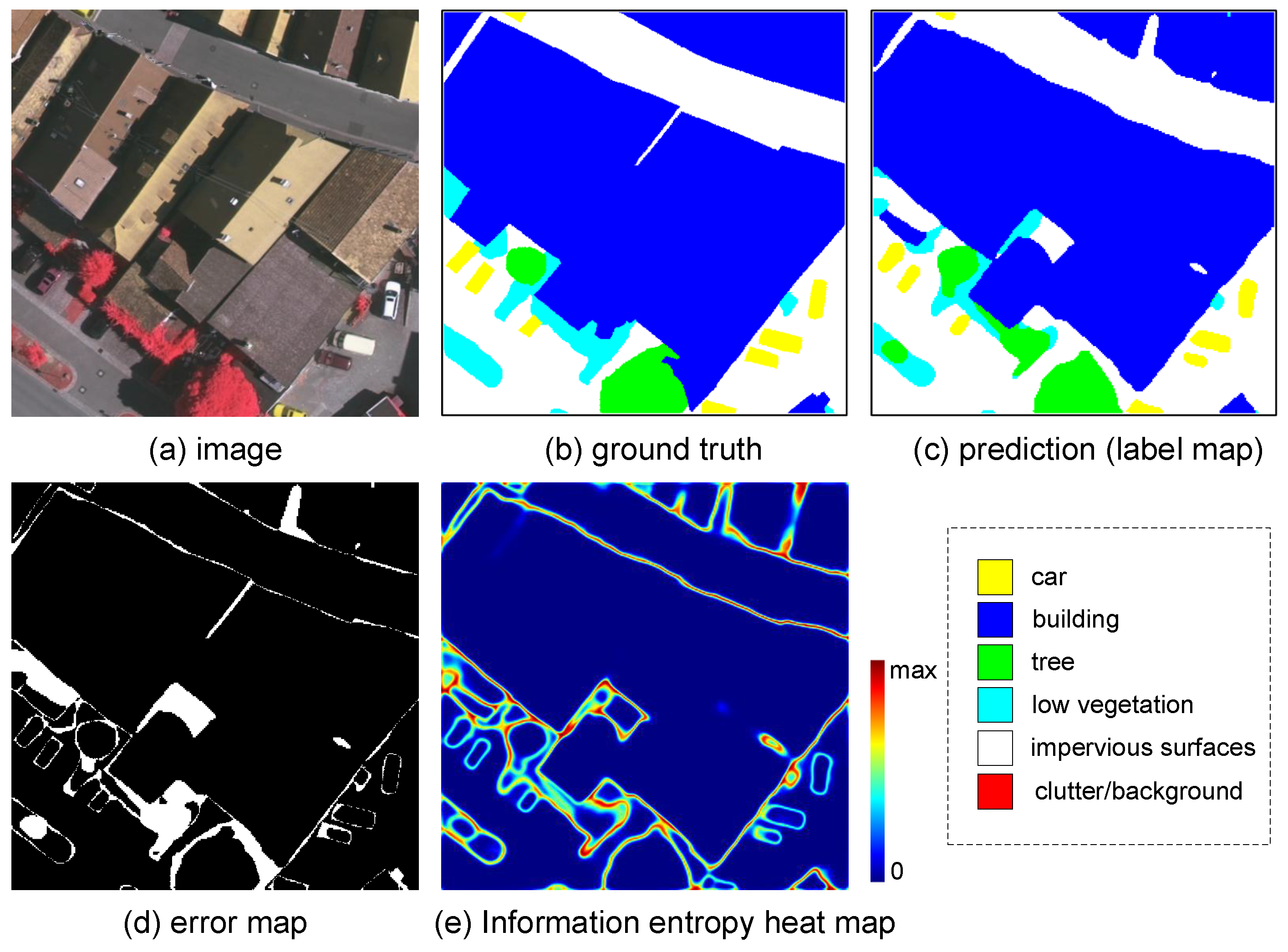

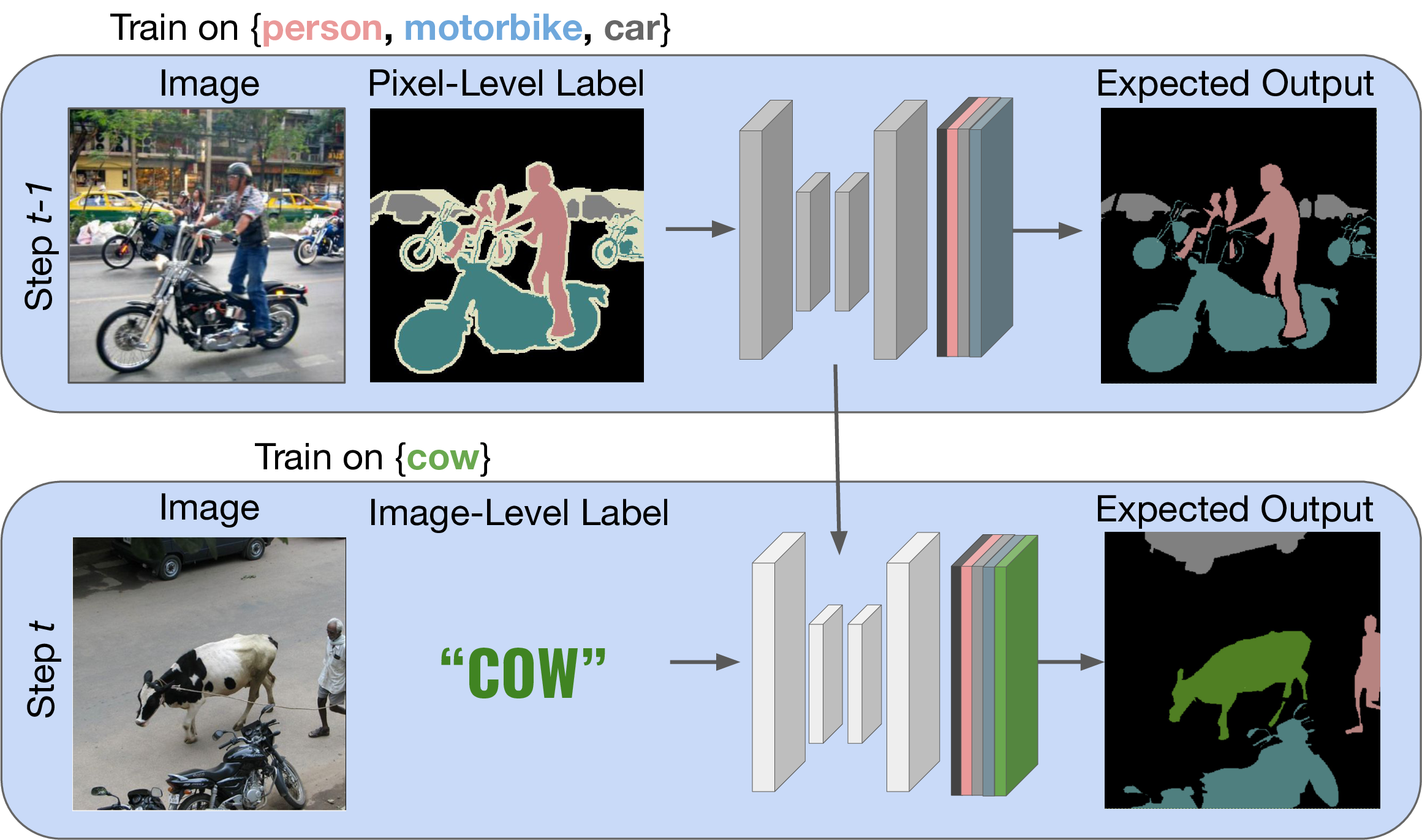

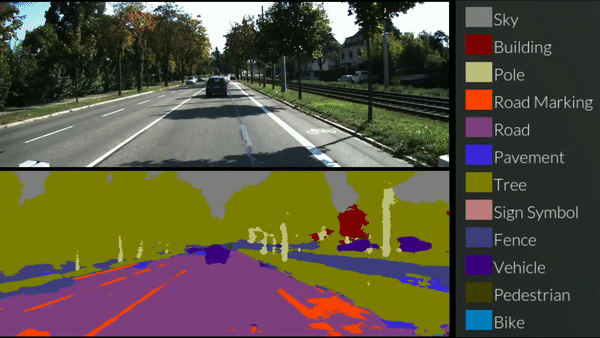
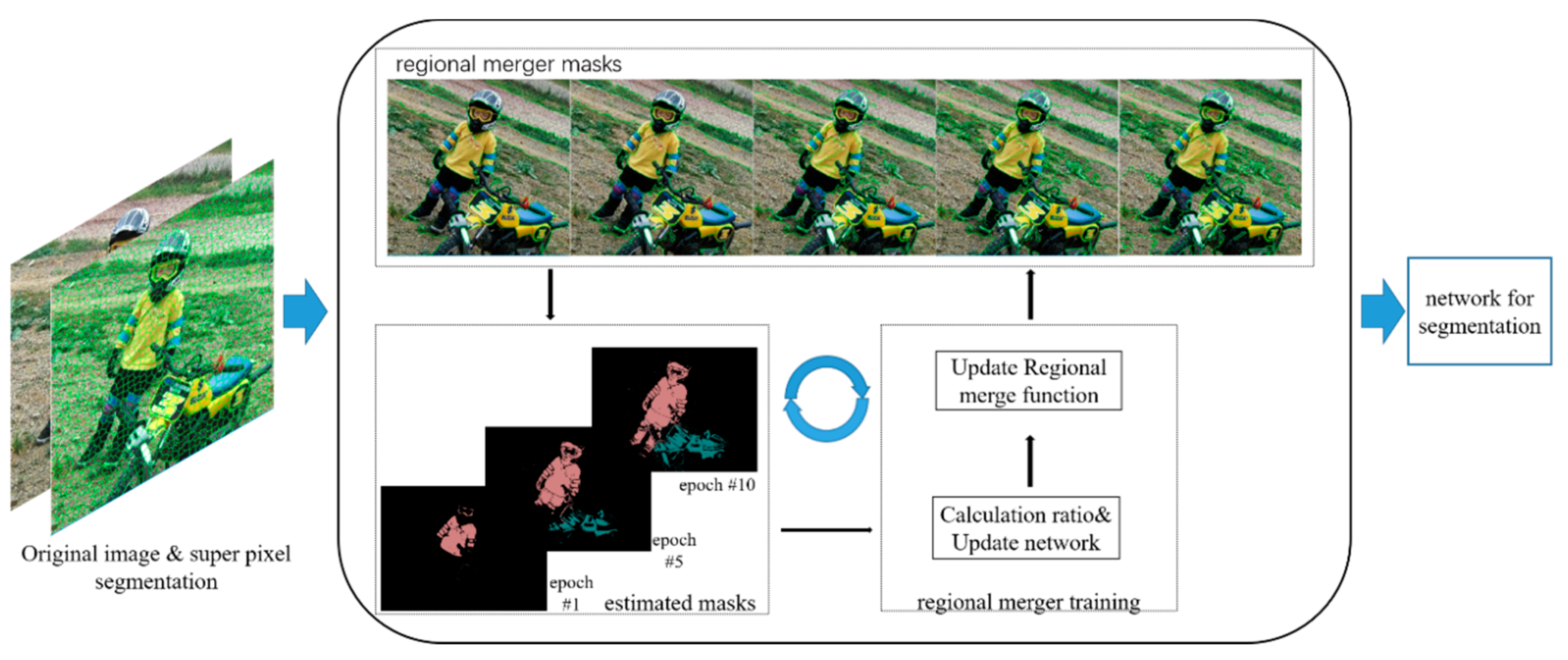



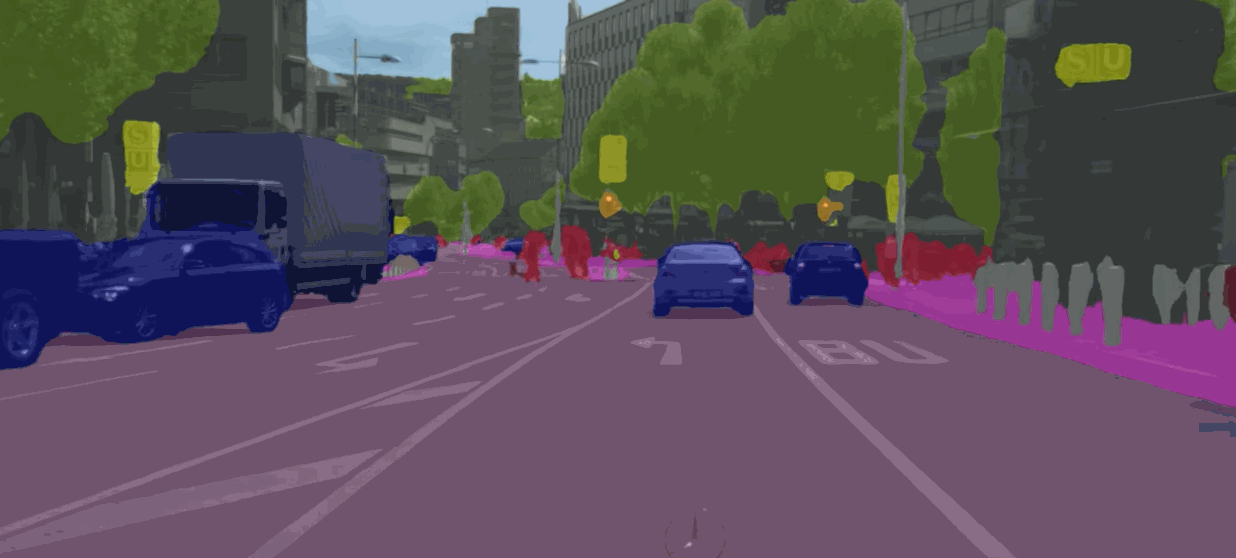
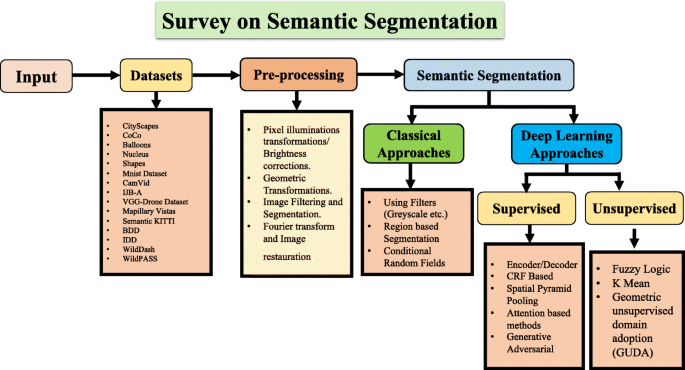

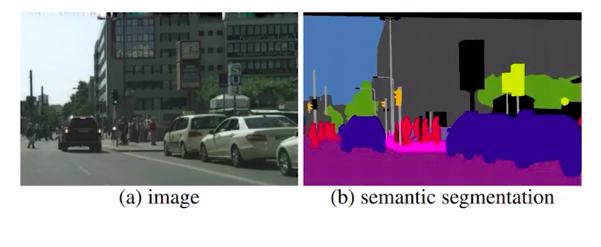


Post a Comment for "39 in semantic segmentation pixel labels"